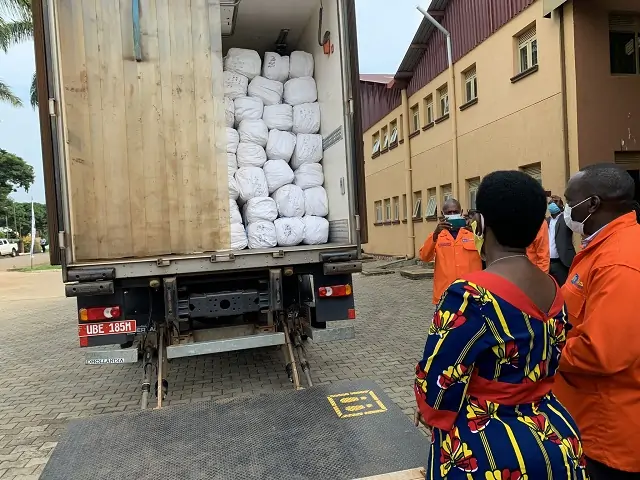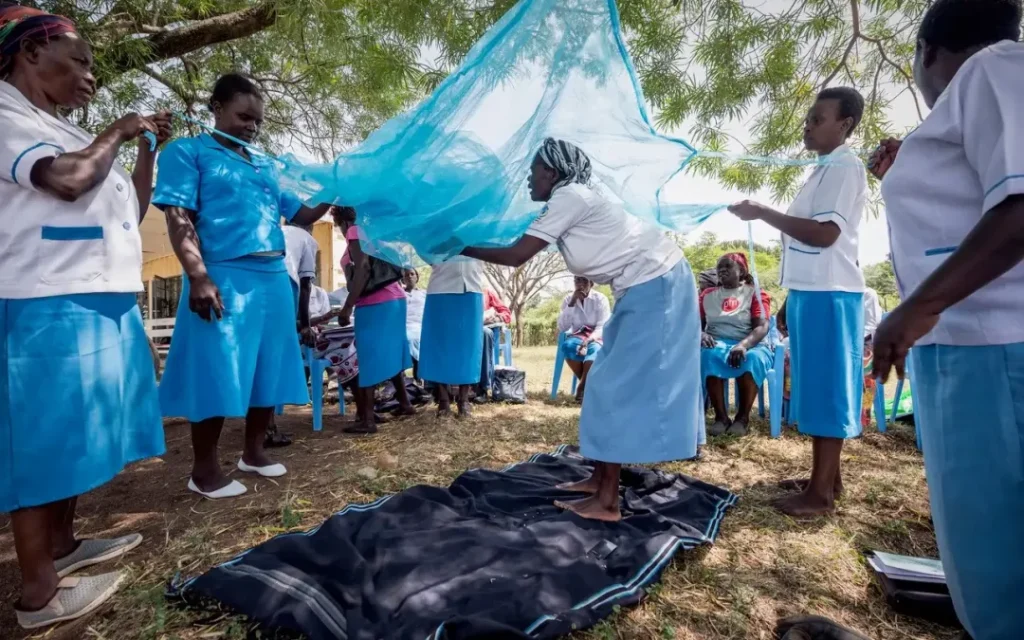Malaria
Uganda’s Fight Against Malaria: Global Fund Support
Malaria Prevalence: Malaria is responsible for 20-34% of outpatient hospital visits in Uganda, making it one of the leading causes of illness and death, especially among children under five and pregnant women.
Mortality: In 2022, malaria accounted for over 14,000 deaths in Uganda, most of them among vulnerable groups such as children and pregnant women.
Bed Net Coverage: The distribution of over 45 million insecticide-treated bed nets (ITNs) has helped reduce the national malaria prevalence from 42% in 2009 to around 19% in 2022.
Indoor Residual Spraying (IRS): In districts where IRS has been implemented, malaria cases have reduced by as much as 60%, drastically lowering the infection rate in high-risk regions.
Treatment Access: With Global Fund support, more than 90% of health facilities in Uganda are now equipped with ACTs (Artemisinin-based Combination Therapies), the most effective antimalarial drugs.
Malaria Testing: The availability of rapid diagnostic tests (RDTs) has led to a sharp increase in accurate malaria diagnoses, from 30% of suspected cases in 2010 to over 85% in 2023.
Reduction in Malaria Mortality (Under-5): Deaths due to malaria in children under five have decreased by 45% over the last decade, a direct result of improved access to treatment and preventive measures supported by the Global Fund.
Malaria remains a leading public health challenge in Uganda, contributing significantly to illness and death, particularly among children under five and pregnant women.
As a country with one of the highest transmission rates in the world, the need for robust interventions is critical. The Global Fund has been instrumental in supporting Uganda’s efforts to combat malaria by providing critical funding that has saved millions of lives.


Global Fund Support
Since 2002, the Global Fund has provided over $1 billion to Uganda’s fight against malaria, supporting the distribution of insecticide-treated bed nets (ITNs), indoor residual spraying (IRS), and the supply of life-saving antimalarial medicines such as artemisinin-based combination therapies (ACTs).
This funding has been pivotal in reducing the malaria burden in Uganda, which accounts for 5% of global malaria cases.
Key Achievements
Bed Net Distribution: Through the Global Fund’s assistance, Uganda has distributed over 45 million insecticide-treated bed nets between 2010 and 2023. This initiative has contributed to reducing the malaria prevalence rate by nearly 40%.
Indoor Residual Spraying: IRS has been implemented in high-transmission regions, leading to a significant reduction in mosquito populations and, consequently, malaria transmission.
Treatment and Care: Over 200 million malaria cases have been treated through the support of the Global Fund, with the supply of ACTs and diagnostics being essential for rapid and effective treatment.
Ongoing Challenges
Despite these achievements, Uganda still faces numerous challenges in the fight against malaria. The parasite’s increasing resistance to drugs, insecticide resistance, and gaps in health infrastructure continue to pose significant barriers. The Global Fund’s continued support is crucial in addressing these challenges, improving healthcare delivery, and sustaining the progress made so far.
Looking Forward
With sustained funding from the Global Fund, Uganda is committed to achieving the goal of reducing malaria cases by 50% by 2030. Ongoing initiatives include scaling up preventative measures, expanding access to treatment in hard-to-reach areas, and investing in research for more effective interventions.
Conclusion
The partnership between Uganda and the Global Fund has been transformative in reducing malaria morbidity and mortality. However, more work remains to be done. With continued funding and collaboration, Uganda is on track to make malaria elimination a reality, ensuring a healthier future for all.